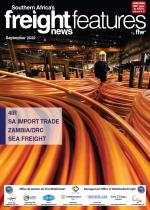Mining in the Democratic Republic of the Congo has been rejuvenated as changes to the mining code and other policies are starting to pay off and investors are coming to the pa r t y.This comes as mining house Barrick recently announced that its investment in the Kibali gold mine now exceeded $4 billion and that it had created a thriving regional economy in a remote part of the country through partnering with and mentoring local entrepreneurs, uplifting host communities and upgrading essential infrastructure.According to Barrick president and chief executive Mark Bristow, Kibali was not only Africa’s largest gold mine, it was also a global leader in automation, sustainability initiatives, clean energy and skills training.“Thanks to Barrick’s policy of local employment and advancement, 94% of Kibali’s workforce, including its management, are Congolese nationals. It is now also driving the employment of women in the traditionally male-dominated mining industry through targeted recruitment campaigns and development programmes designed to equip them for rewarding careers at all levels of the organisation,” he said.Kibali in 2021 paid $200 million in dividends, while its mineral reserves increased for the third successive year. It is also on track to meet its full-year production guidance in 2022. Thanks to three world-class hydropower stations, the mine has been able to mitigate the impact of higher fuel prices and significantly reduce its carbon footprint. Bristow said the stations were built well before climate change became a priority issue, demonstrating Barr ick ’s long-standing commitment to sustainability in all its activities.Barrick has also committed to ongoing exploration in the DRC, and it is believed that new growth opportunities with the potential to grow the mineral resource base beyond the original feasibility study will be achieved.A current drilling programme, Kalimva, has confirmed potential at depth, while exploration drilling is about to start at Zambula, targeting potential high-grade zones. At Makoro, high-grade surface sampling results have indicated potential along a more-than-three-kilometre corridor.

